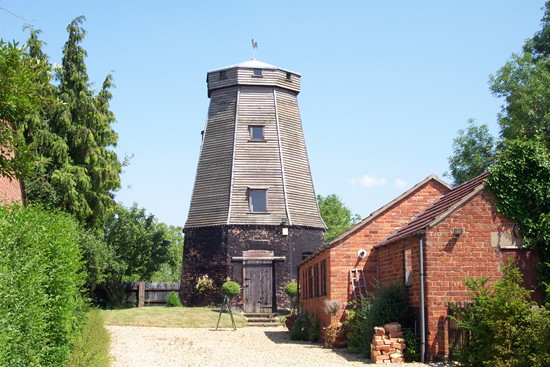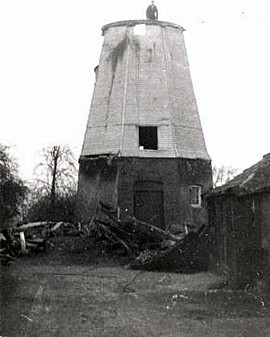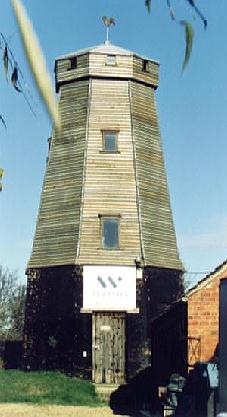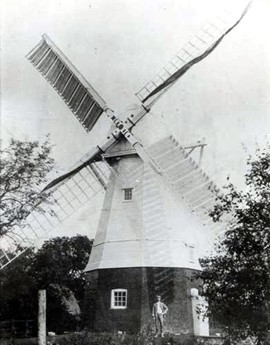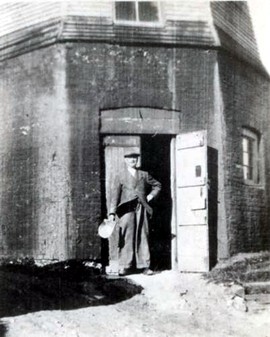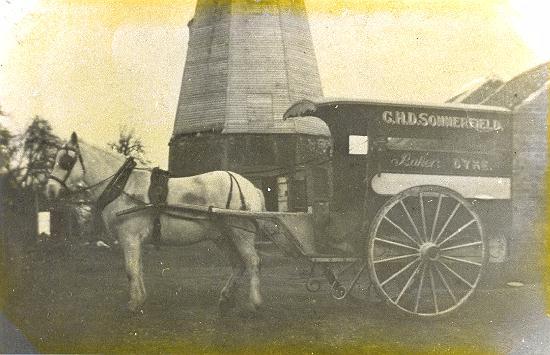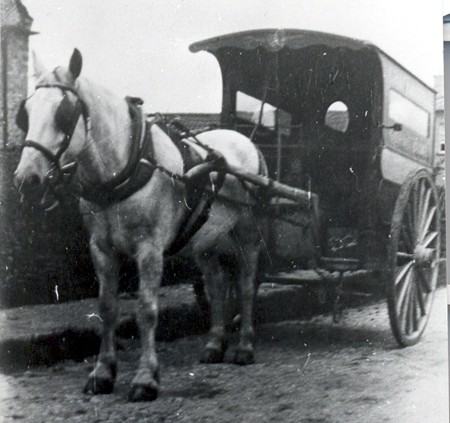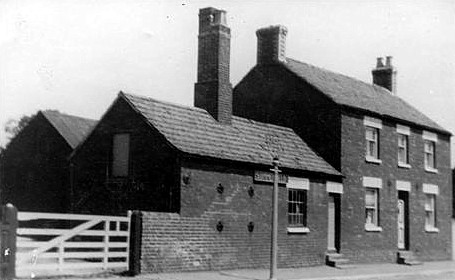|
Dyke Mill
The most imposing building in the main street at Dyke is an old smock mill dating from the 18th century, now no longer used for its original purpose but still a striking example of village industry from times past. Windmills first appeared in Persia in the 7th century and reached Europe by the late 12th century and thereafter their use spread rapidly. By the early 19th century, there were about 10,000 windmills in England and Wales, grinding grain, driving mechanical saws, raising coal, pumping water and making paper. Tower mills were the most popular of all of the windmills with the machinery in a fixed tower surmounted by a rotating cap carrying the sails. Tower mills were usually built of brick or stone but some were made from wood and then, like this one at Dyke, were known as smock mills and this is the only one remaining in Lincolnshire. It was originally a pumping mill in Deeping Fen, probably built by Dutch drainage engineers in the late 17th or early 18th century and around 1840 it was moved to Dyke and fitted with corn milling machinery but lost its sails in 1923 and so ended its wind-powered working life. The mill had a boat-shaped cap turned to wind by a braced tailpole, both features inherited from its former use, and two common and two spring shuttered sails driving three pairs of stones. The last miller was Mr Thomas M Sommerfield who wrote on 8th September 1940: "It was the best fitted mill I was ever in, but old fashioned outside. I worked it for 32 years. It was dismantled in 1927 and was in my family for 63 years. All the spindles below the stones were turned and I took great pride in keeping them polished with sandpaper. The governors [used to regulate the distance and pressure between the millstones] were also bright. I never saw this anywhere else in my life. Everything was of the best. My father thought a lot of this mill." Other Dyke millers were: William Sardeson (1842), John Hack (1855-61), John C Jeffery (1872), John T Sommerfield (1882-1913) and George Henry Duke Sommerfield (1919-1926). Until the Sommerfield family took over, the mill appears to have been privately owned and rented out because the Grantham Journal reports a change of ownership on Saturday 18th September 1875 when the tenant was still John Jeffery. The report said: "Property sale: On Thursday evening last, Mr Henry Lawrence, of Bourne, offered for sale by public auction a newly-built house and tower windmill, situate in Dyke, in the parish of Bourne. The highest bidding was £490 by Mr Joshua Walpole, of Dyke, but the reserve bid was £600 and the lot was not sold. Two cottages in Dyke, adjoining the above property, were then offered and after biddings from £100 to £172 10s. were sold to Mr Joshua Walpole at the latter price. We understand that negotiations were afterwards entered into for the first lot." It would therefore seem that Mr Walpole bought the mill with the existing tenant and subsequently sold to the Sommerfield family who retained ownership for 63 years. The mill is now in private hands and has recently been restored although the seasoned old wood that gave the building its historic appearance has been replaced in the upper sections by new timbers that will take many years to weather. Both the mill and the adjoining house were put up for sale in 2001 with a price tag of almost £250,000. They were eventually sold in 2002 and the mill is now used as an art gallery and for the sale of antiques, arts and crafts and picture framing.
Return to Dyke village
Go to: Main Index Villages Index |
||||||||||||||||||||
